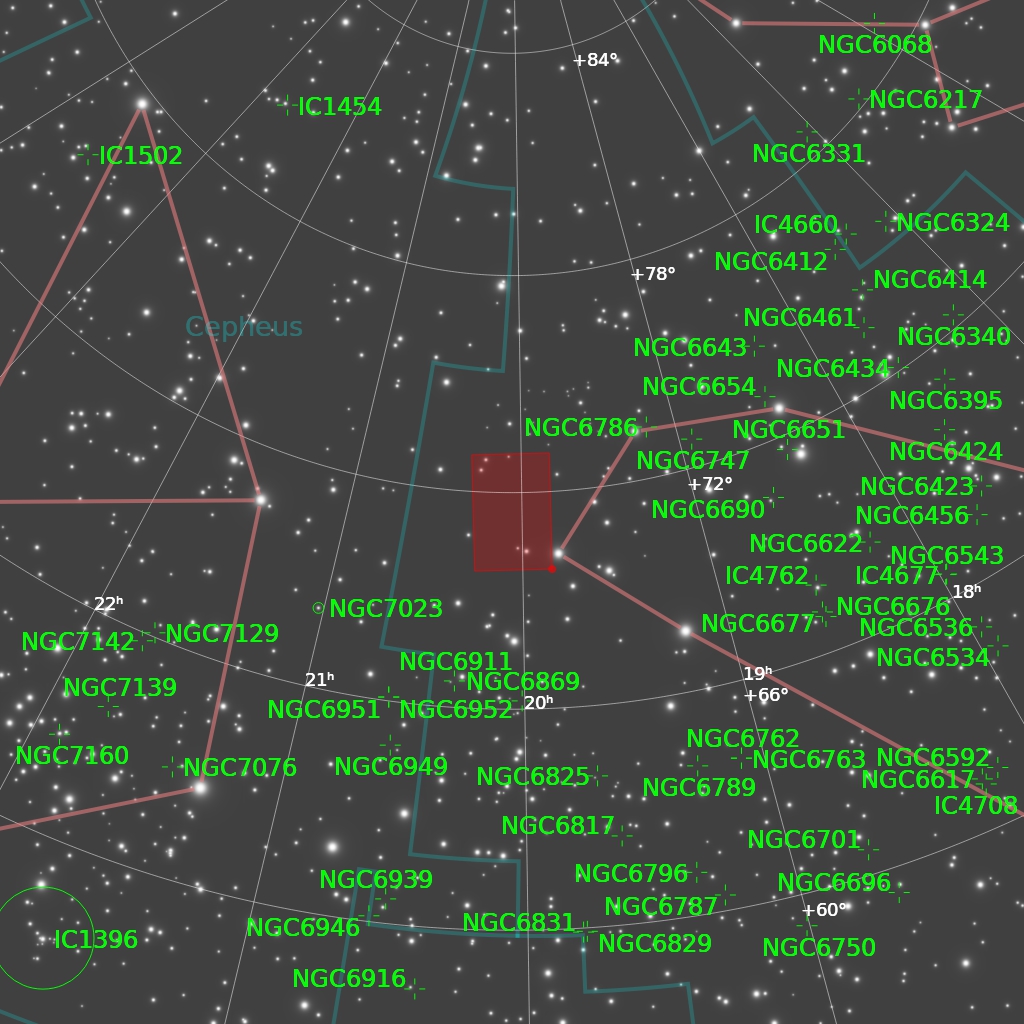Reflection Nebula
EGB 10
Note: The EGB catalog was originally compiled by Glen L. Ellis, Earl T. Grayson, and Howard E. Bond from the Department of Astronomy at the University of Louisiana (USA).
EGB 10, a very faint object located in the constellation Draco, was initially identified in the 1980s as a potential planetary nebula. However, it was quickly dismissed and later misclassified at various times as a reflection nebula or even a distant galaxy. Recent work by a team including Xavier Strottner, Marcel Drechsler, Utkarsh Mishra, and Sankalp Mohan has significantly revised our understanding of this object. Their findings revealed that EGB 10 is in fact a much larger and more intricate cosmic structure.
Narrowband imaging in the OIII spectrum has uncovered expansive gaseous shells, suggesting a far more complex origin and morphology than previously believed.
To capture the image, an ASKAR FRA400 refractor telescope was used in combination with a ZWO ASI2600MM monochrome CMOS camera and Antlia Ha, OIII, and RGB filters. Given the extreme faintness of the Ha and OIII emission, long exposures were essential to gather enough signal. A total of 664 frames were stacked, resulting in 81.7 hours of integration time. Post-processing involved careful contrast and level adjustments to bring out delicate structures such as the faint surrounding gas clouds.
TECHNICAL DATA
ACQUISITION DETAILS
OPTICS ASKAR FRA400 @ F/5.6
CAMERA ZWO ASI2600MM & 2600MC
MOUNT Skywatcher NEQ-6 Pro SynScan GoTo
FILTERS Ha, OIII, RGB
LOCATION Saintes, Nouvelle-Acquitaine, France
DATE April 2025
EXPOSURES 81.7 hours (Ha 238 x 600 sec, OIII 178 x 600 sec, RGB 248 x 180 sec)
PROCESSING SOFTWARE Pixinsight, Photoshop
COPYRIGHTS Christophe Marsaud, Yoann Boury, Nicolas Rolland

TARGET DETAILS
RA 20h 03m 29.7s
DEC +71° 27' 42.8"
SIZE 3.23 x 2.15 deg
PIXEL SCALE 0.96 arcsec/pixel
ORIENTATION Up is 267.6 degrees E of N
CONSTELLATION Draco
